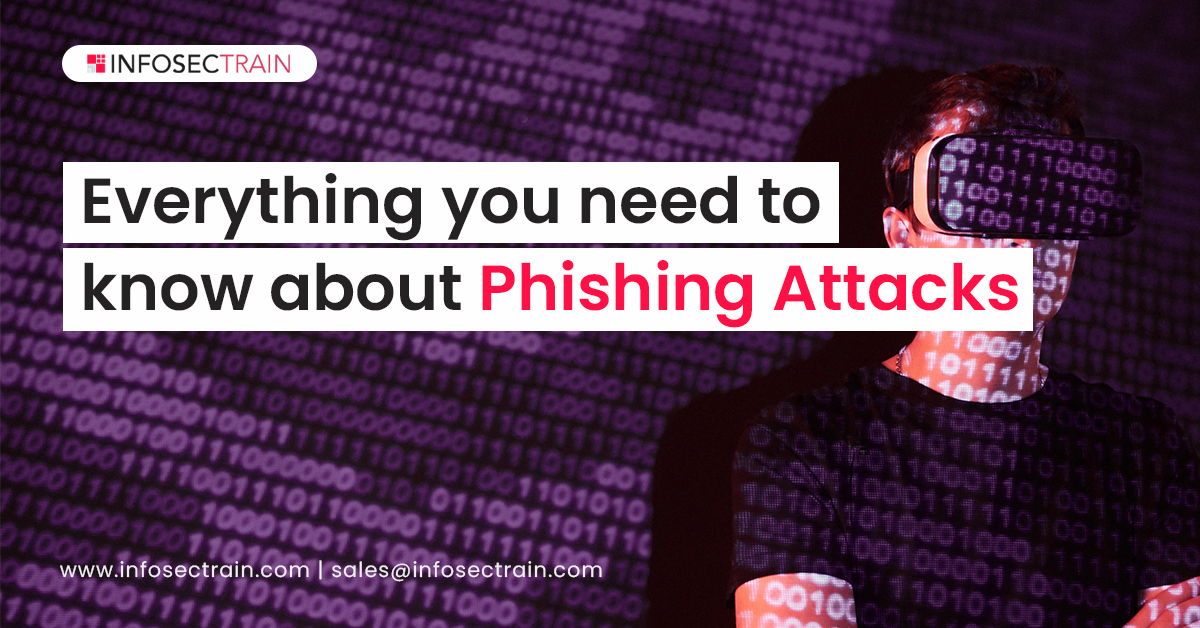Everything You Need To Know About Phishing Attacks
Even though the spelling is Phishing, we pronounce it as Fishing. Not only pronunciation, but they are also kind of similar, as we use a worm to catch a fish called fishing. On the other hand, the attacker may send a fake Email, Message, WebLink, or a Voice Call to get our private data called Phishing.

The main aim of phishing attackers is to steal your sensitive and personal data like login credentials, credit card information, etc. They may also try to install the malware into your systems.
Phishing is one of the complicated cyber attacks that everyone should know about. Go through this blog to get an idea of phishing in detail.
How does Phishing work?
Let us assume you have received an email from Google asking you to change your password for security purposes with a link that will directly take you to the login page. Everything is good till now, except the fact that the message is not from google. The attackers design the structure of the login page in such a way that we can’t find a single mistake. It looks like a replica of the original page.
Once you enter your credentials, you may not log in to your account, but your credentials are now in the hands of the attackers. These kinds of Emails have become a common type of attack in recent years.
A study in the year 2015 found that 97% of people cannot find the difference between a normal email and a Phishing email. The problem is we can’t realize how personalized Phishing can be. Yes, these Phishing attacks can be very personalized. These kinds of targeted Phishing attacks are called “Spear Phishing.”
Types of Phishing attacks:
Deceptive Phishing: Deceptive Phishing is the most common Phishing. In this type, the attackers send a malicious email that looks exactly like a legitimized email where it urges us to click the links. This is not a targeted attack, but attackers randomly send these emails to many people.
Spear Phishing: As I said, Spear Phishing is a kind of target attack. Attackers will collect some information about you from different social media platforms like Instagram and Facebook. After collecting the data, they may send you personalized emails, messages that attract you to enter your login information, or credit card details. Then the attackers can get a hold of your private data.
Whaling: Just as the name says, Whaling is a kind of attack when the attackers go for the big fish. It generally happens at the enterprise level or even targets the CEOs of various organizations.
Pharming: Pharming directs people to a false website that seems authentic. In this situation, however, victims are not required to click on a malicious link to the phony website. Even if the user types in the proper URL, attackers can infect the user’s machine or the website’s DNS server and redirect the user to a false site.
Smishing (Mobile Phishing): A phishing SMS, social media message, voice mail, or another in-app communication request that asks the receiver to update their account information, change their password, or informs them that their account has been compromised. This message contains a link that is used to steal the victim’s personal information.
Vishing (Voice Phishing): This happens when a caller leaves a message using aggressive language urging the listener to reply promptly and call a different phone number. These voicemails convince the victim to respond. For example, the attacker may say if you do not respond, your bank account would be suspended.
Protecting yourself from Phishing:
Implement security technologies: Phishing assaults are impossible to avoid with any cybersecurity system. Instead, businesses must employ a multi-tiered strategy to limit the frequency of assaults and mitigate their damage when they do occur. Email and online security, virus prevention, user behavior monitoring, and access control are all network security technologies that should be deployed.
User Education: User education is one approach to defend your company against Phishing. All staff should participate in training including the high-ranking executives who are frequently targeted. Teach them how to find a phishing email and what they should do if they get one. Simulation exercises are also important for determining how your workers react to a phishing attack that has been faked.
Infosec Train:
Infosec train is one of the leading training providers with a pocket-friendly budget. So, if you want to get a good grip on the various Security courses, then join us to experience an incredible journey with our industry experts. Our courses are available in live instructor-led and self-paced sessions, making it easy for you to take up and complete your learning/ training journey at ease. Join InfosecTrain to learn skills that can change your life.
Check your knowledge here:
1. Which of these is a type of Phishing?
- Deceptive Phishing
- Spear Phishing
- Both
2. Which of the following is a way to protect yourself from a Phishing attack?
- Whaling
- User education
- Pharming
3. What is the full form of Vishing?
- Voice Phishing
- Mobile Phishing
- Deceptive Phishing
4. What is the full form of Smishing?
- Voice Phishing
- Mobile Phishing
- Deceptive Phishing
5. How is Spear Phishing done?
- By targeting a specific person
- By randomly sending messages
- None
Check your answers here.






 1800-843-7890 (India)
1800-843-7890 (India)